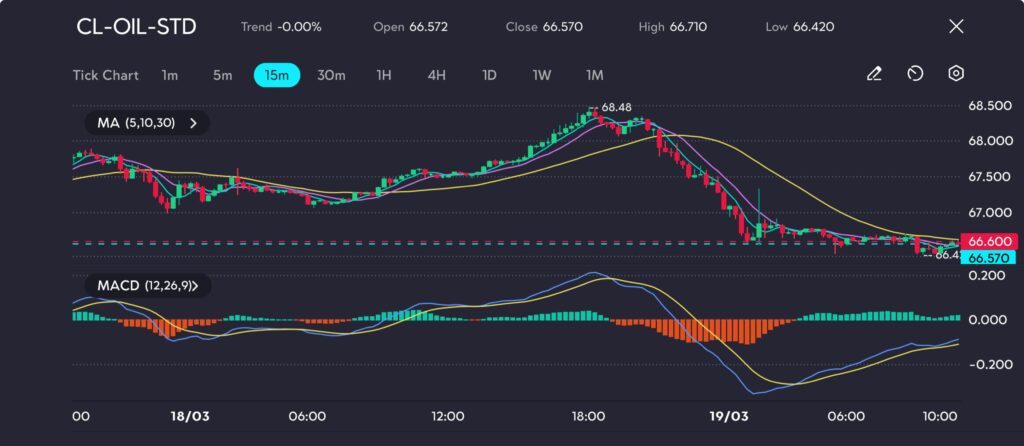
WTI crude oil prices are under pressure as market sentiment weakens due to shifting global supply expectations. With Russia potentially increasing exports and OPEC set to raise production, traders are concerned about oversupply driving prices lower.
At the same time, rising US crude inventories point to a slowdown in demand, adding to the uncertainty. In this analysis, we explore the key factors influencing crude oil prices, the latest technical trends, and what traders should watch for in the coming days.
WTI crude oil futures continued their downward trajectory, hitting a low of USD 66.42 per barrel on Tuesday.
The market reacted to reports that Russian President Vladimir Putin agreed to halt strikes on Ukrainian energy infrastructure but dismissed a proposed 30-day ceasefire.
This development has fuelled speculation that Western sanctions on Russian oil exports may ease in the near future, potentially increasing global supply and exerting further downward pressure on prices.
Additionally, OPEC’s announcement to boost production from next month has added to the bearish sentiment.
The prospect of higher output from both Russia and OPEC raises concerns of oversupply, making traders hesitant to take bullish positions.
WTI crude oil settled at USD 66.570, marginally lower than its opening price of USD 66.572, after fluctuating between a session high of USD 66.710 and a low of USD 66.420.

Prices initially climbed to USD 68.48 before pulling back sharply, reflecting ongoing demand concerns and a stronger US dollar.
Moving averages (5, 10, and 30) indicate a sustained downtrend, as short-term MAs have crossed below longer-term averages, reinforcing bearish momentum.
The MACD (12,26,9) histogram remains negative, with the signal line trending downward, suggesting continued selling pressure.
Key support lies near USD 66.00, and a break below this level could push prices toward USD 65.50.
On the upside, resistance is observed at USD 67.50, with a breakout potentially signalling a short-term rebound.
Further weighing on crude oil prices, recent industry reports have shown larger-than-expected builds in US crude inventories.
This indicates a slowdown in demand amid persistent global economic uncertainties.
Trade disputes and economic headwinds continue to pose risks, prompting caution among traders who are closely monitoring signs of further demand weakness.
In the short term, WTI crude oil may remain under pressure as Russian supply expectations and OPEC’s production increase contribute to concerns of an oversupplied market.
However, traders should stay vigilant for any geopolitical developments, particularly in the Middle East, which could trigger sudden price swings.
Additionally, upcoming inventory reports and key global economic data will play a crucial role in shaping market direction.
Click here to open account and start trading.